I will honestly tell you this, I am not the biggest fan of the taste of kale.
In soup, salads, and even when turned into kale chips, I often can’t get by the taste.
However, knowing how nutritious it is, I do manage to sneak kale into my diet pretty much every day with this simple trick: making frozen kale cubes. I love it, because they’re something I can easily add to my morning smoothie or sometimes afternoon post-workout drink.
By adding frozen kale cubes to my smoothies, I get to include this nutritional powerhouse into my diet without ever really have to taste it.
The Health Benefits of Kale
With just 33 calories in one cup of kale, you wouldn’t think it could ever be such a nutritional powerhouse. But surprisingly, it’s loaded with nutrients that you just won’t get with many other vegetables.
Here are a few of the nutritional highlights of kale:
Over 20% of the daily nutritional value of vitamin A, vitamin C, vitamin K, vitamin B6, folate, and manganese.
A good source of thiamin, riboflavin, pantothenic acid, and vitamin e.
Contain phytochemicals (may offer disease protection), carotenoids, lutein, and zeaxanthin.
You should also know that like most vegetables, the nutritional value of kale can be affected by cooking. Sauteing and microwaving can cause a slight lowering of nutrients, while boiling will have a more significant effect.
The shelf life of kale in the refrigerator will be just a few days when stored in a plastic bag, but it tends to last a few days longer if you store your fresh kale by placing the stem portion in a half-filled glass of water.
Freezing kale does not cause any loss of nutrients and may actually help to preserve them. This is why other than for taste reasons, I choose to make kale cubes.
How to Make Kale Cubes in 5 Steps
1. Remove the the tough stem from the leaf portion, either with a knife or by tearing down the stem.
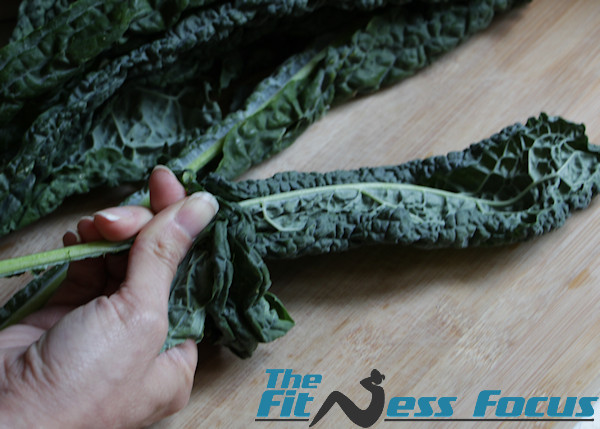
2. User a salad spinner or alternative method to clean your kale leaves until the water runs clear.
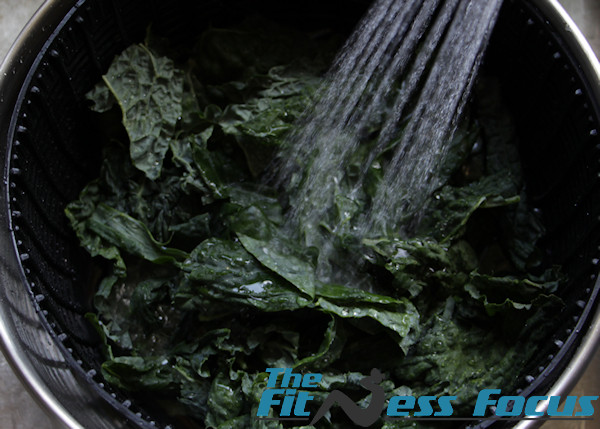
3. Add kale leaves to a blender with 1/2-1 cup of water, depending on the amount of kale.
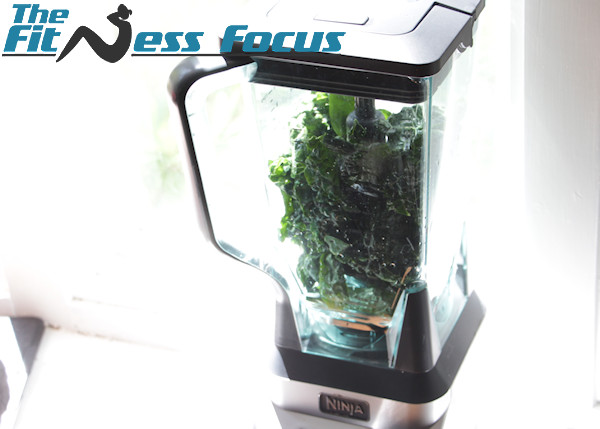
4. Blend until the consistency you desire. A high-powered blender goes a long way into creating a smoother consistency. See below for types of kale to use if you do not have a blender.
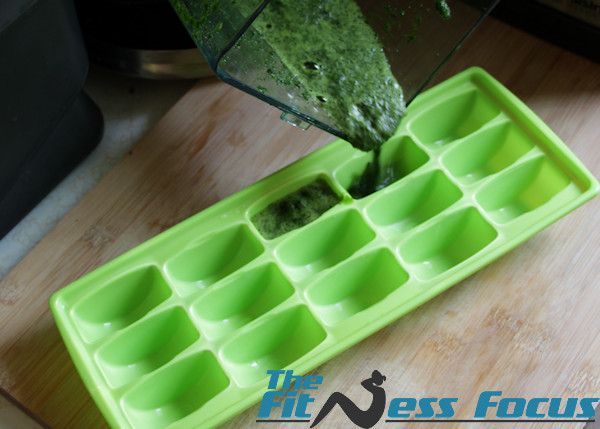
5. Pour kale water mixture into ice cube tray. If the mixture is to thik you can add a little water and blend further. Place in freezer. Once frozen you can separate the cubes into ziploc bags.
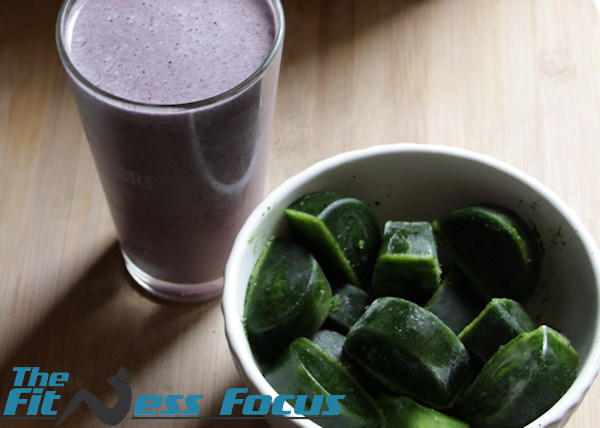
Why not just take your kale leaves, clean them, and throw them into a ziploc bag and freeze? You can do this, but I would recommend that you pre-freeze them separately on a cookie sheet before placing them in the bag to prevent clumping.
The Types of Kale to Use
Kale comes all sizes and shapes. And, they’re all just as good for you. Here are the major varieties you will find at almost any grocery store:
Baby Kale: baby kale are leaves that are picked young. They will be a little more tender that full grown kale leaves. If you have never tried kale before, this can be a good place to start.
Curly Kale: it definitely looks more wavy to me, lol, but curly kale leaves are more delicate than others. If you do not have a high powered blender, the curly kale leaves are going to blend into smoother consistency much more easily.
Dinosaur Kale: like the name implies, dinosaur kale is a hardy species. Its long leaves freeze well and are great in smoothies.
There are also several other varieties including black kale, Tuscan kale, and red Russian kale varieties.
Simple Kale, Avocado & Blueberry Smoothie
While I normally just throw a couple of kale cubes into whatever smooothie I’m making, I wanted to share this recipe for my favorite kale, avocado & blueberry smoothie. Full of all good-for-you nutrients.
Ingredients:
1 cup of your favorite milk
1/2 cup blueberries
1/2 of an avocado
2 pieces of large-leaf kale (I typically use dinosaur kale) OR 12 kale cubes
Instructions:
Place ingredients into a high-powered smoothie blender and blend until your desired consistency, starting off with lowest setting.
I know in this recipe photo, I used fresh kale and not kale cubes, but you can use kale cubes in just about anything. I just really love this photo and how beautiful and colorful this smoothie with lots of healthy monounsaturated fats and antioxidants is. I couldn’t resist sharing!
Over to You
Have your own good use for kale? Please leave your thoughts or recipe below in the comments. I’m always looking for more ways to get this superfood into my diet that are tasty. :)

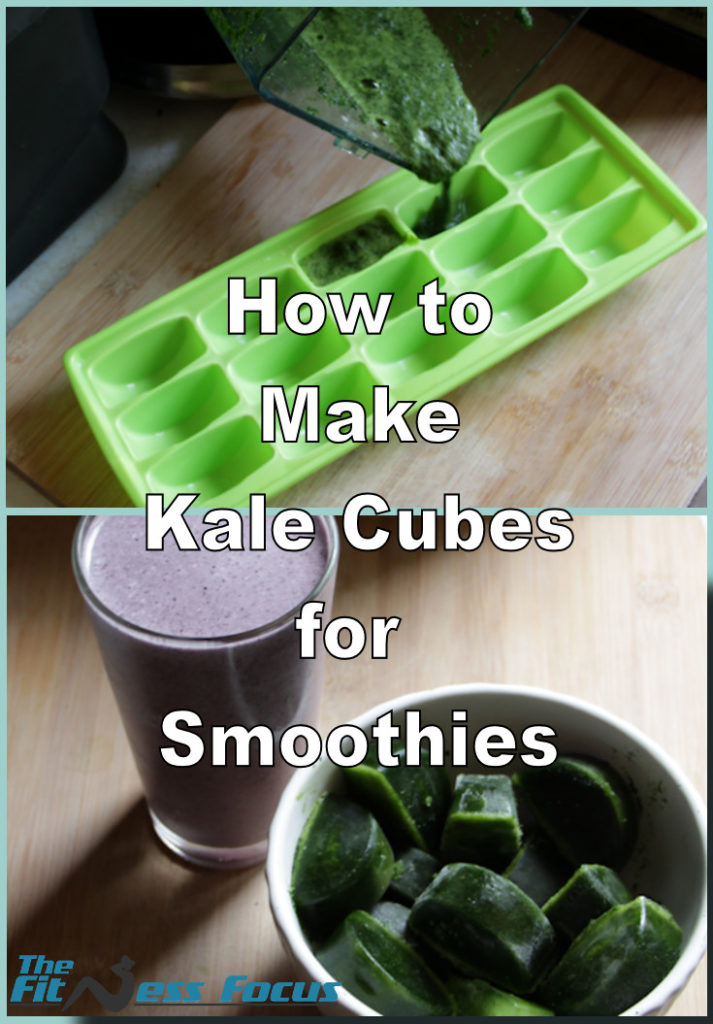
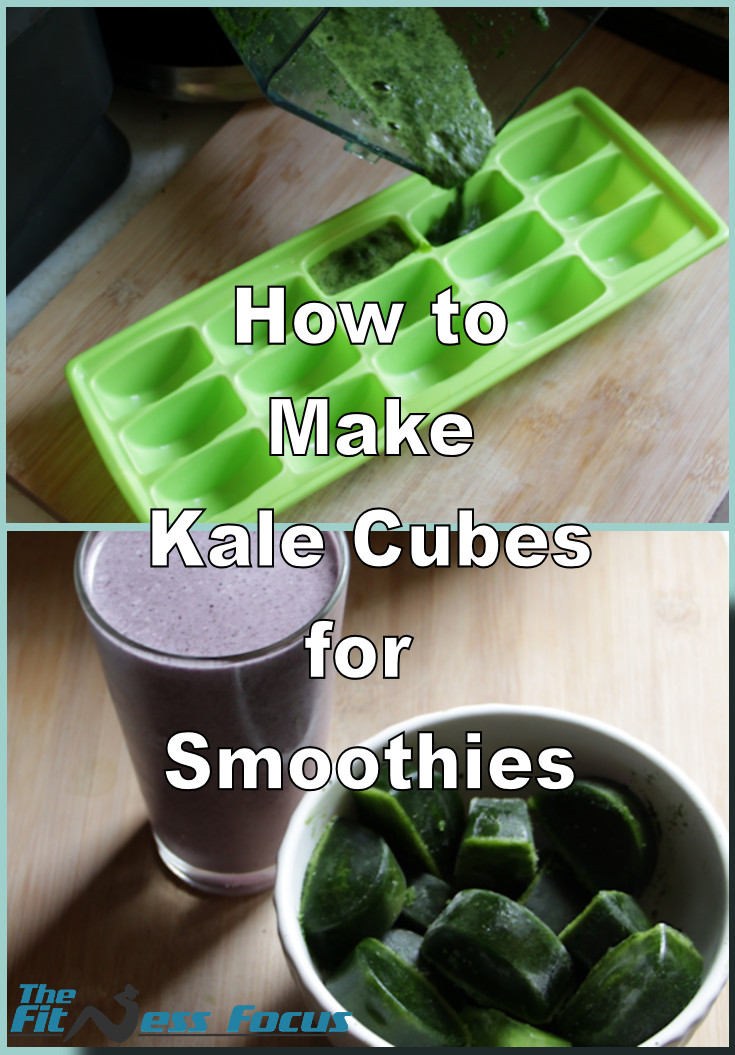
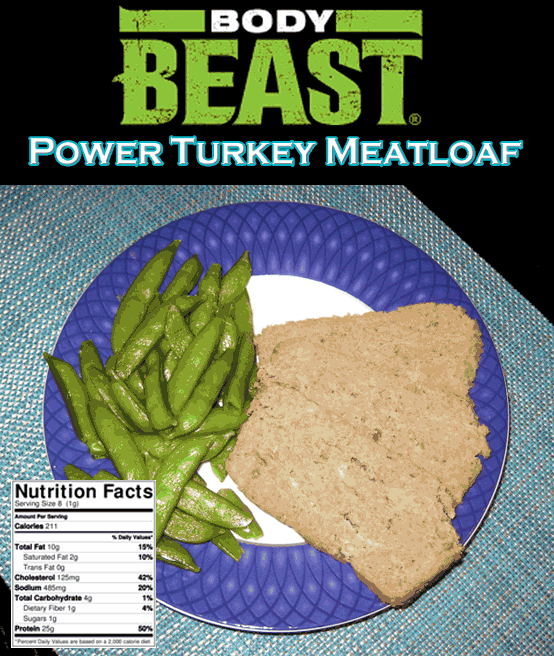

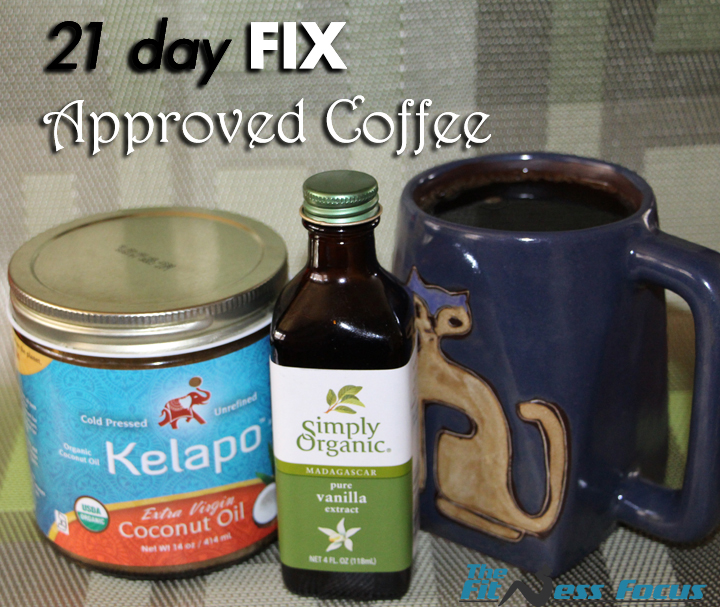
Will definitely try this. Any ideas for spirulina – I am lucky that I like kale but spirulina is horrendous. I really want to include this so have you any ideas?
Hi ALison, I hear mixing it in blueberry or pomegranate juice is a good way to mask the flavor. Or, you could even try making capsules yourself with Cap M Quik or similar. Bethany